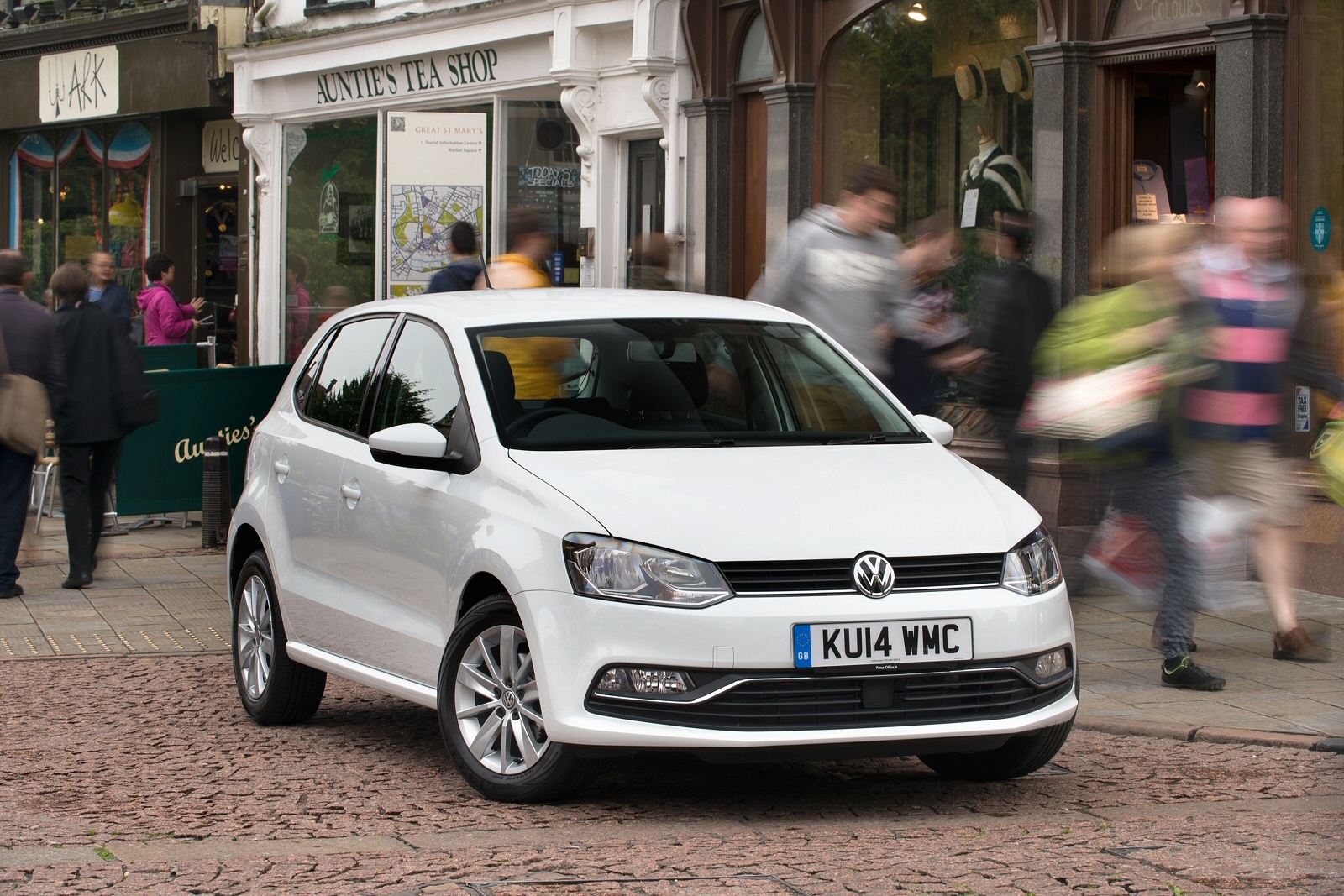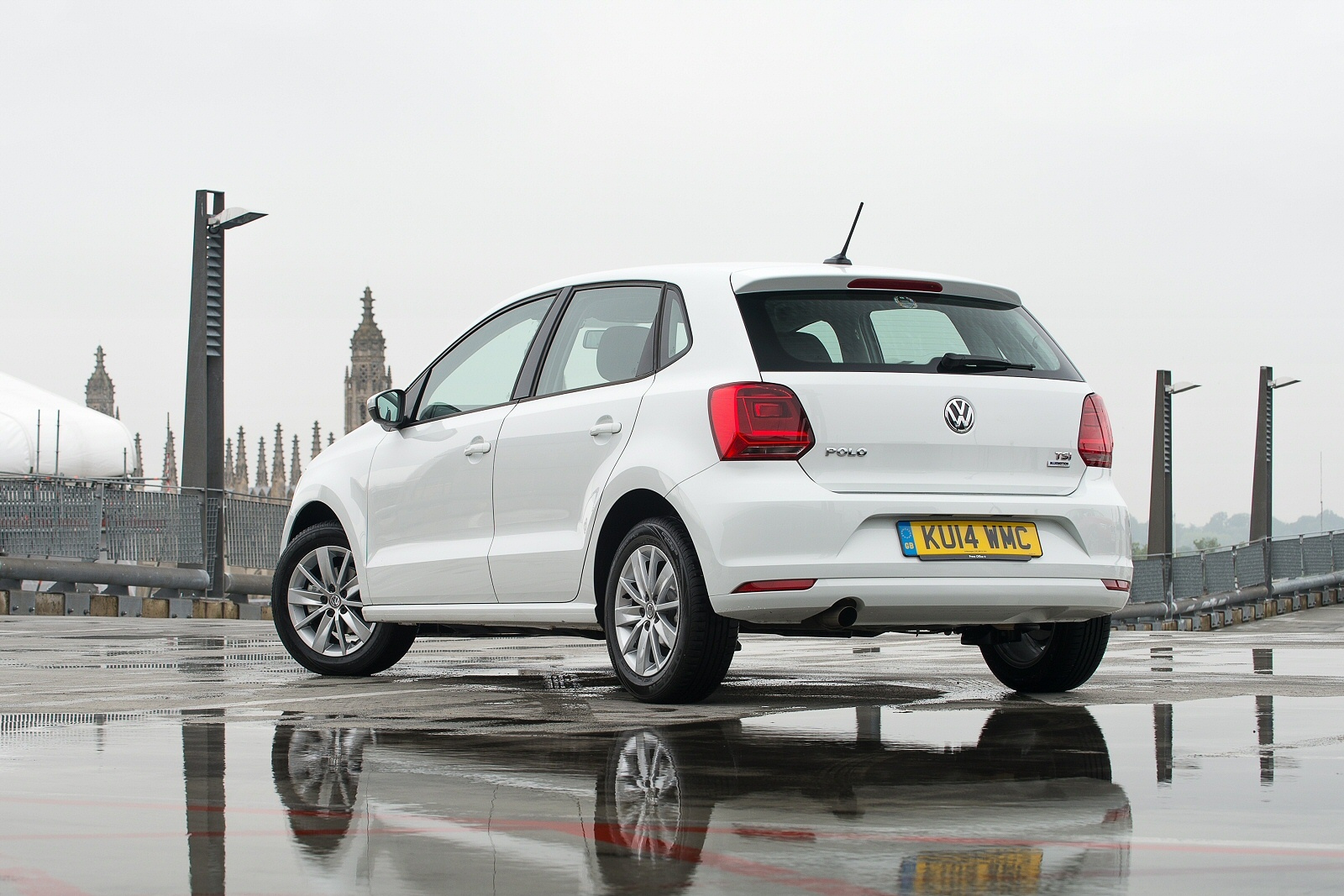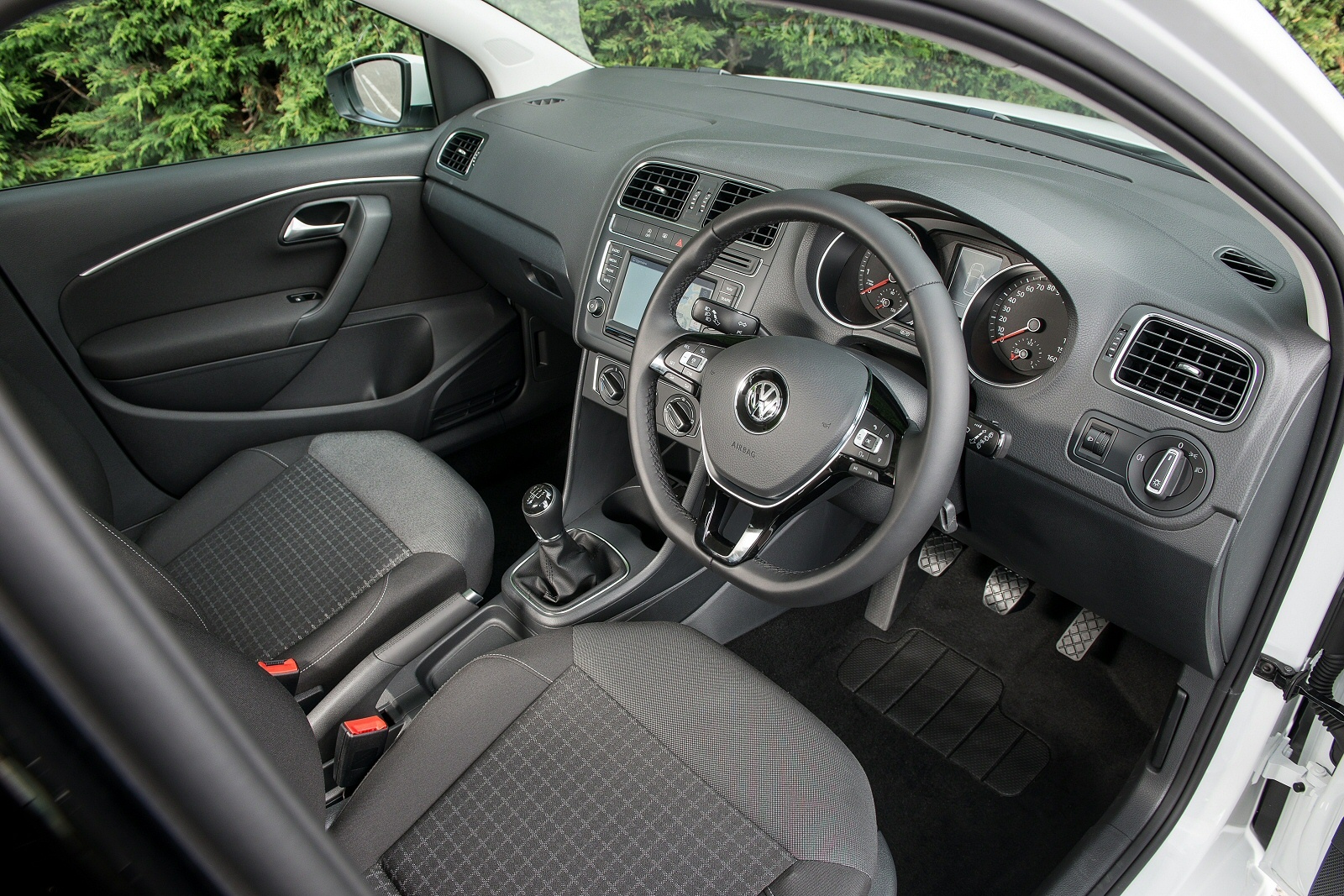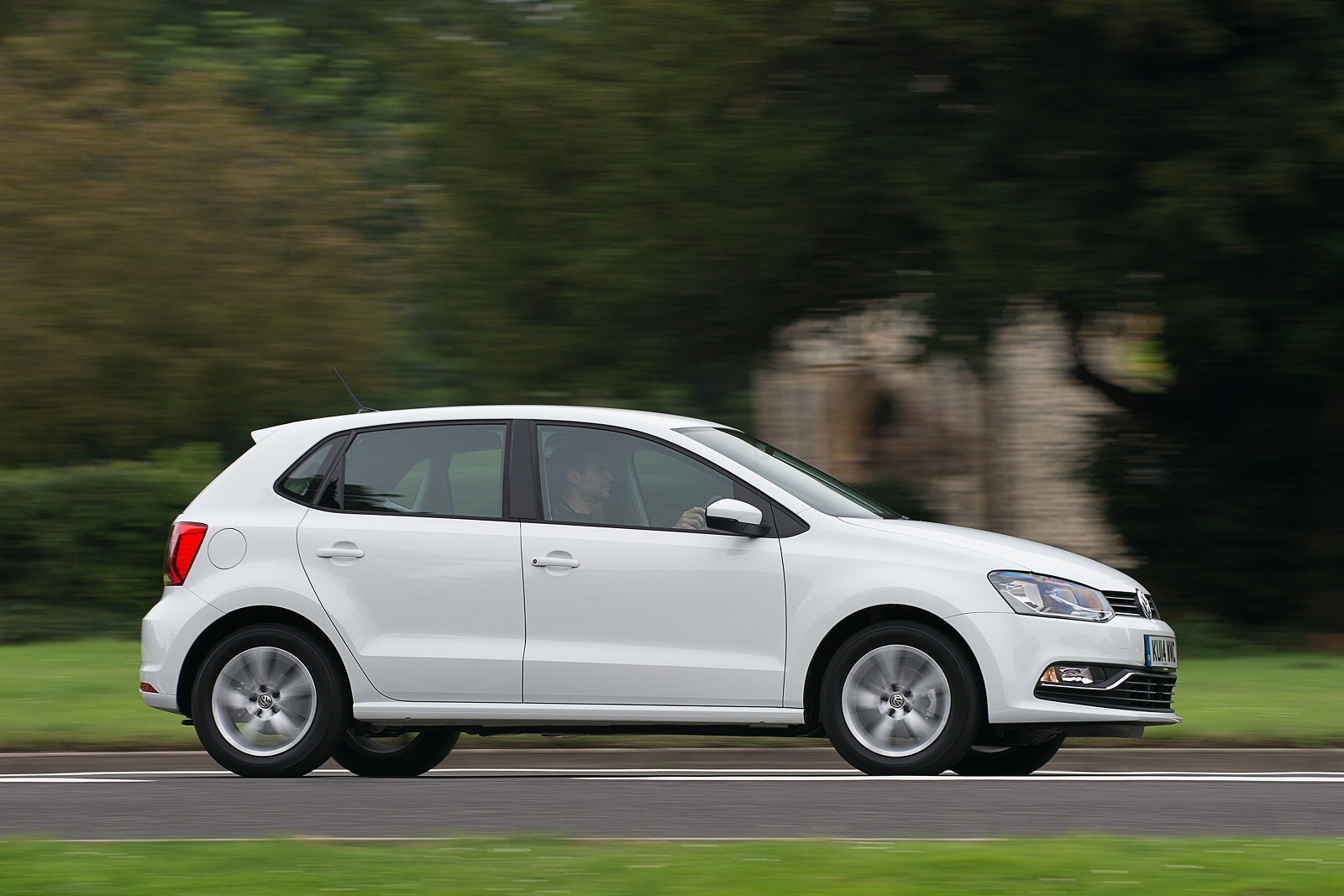The Volkswagen Polo has been refreshed and improved. Andy Enright takes a look at the latest version.
The oily bits under the bonnet have come in for some attention with this update to the fifth-generation car. The Polo now features a range of EU6-compliant engines offering fuel efficiency improvements of up to 23% over the old units. Petrol options are two three-cylinder 1.0-litre MPI units with 57 or 72bhp, two 1.2-litre four-cylinder TSI engines with 87 or 107bhp and a 1.4-litre TSI engine with cylinder deactivation (ACT), with power increased to 148bhp. Should you prefer to go diesel, there are now two three-cylinder 1.4-litre TDI engines, with either 73 and 87bhp.
Safety has been one area where the Polo scores very highly and all models now get a Hill Hold function and an Automatic Post-Collision Braking System which brakes the vehicle after a collision to reduce kinetic energy significantly, thereby minimising the chance or consequences of a second impact. The suspension and chassis are left largely as was, which means that you can expect safe and predictable handling with ride quality that’s a little skewed towards the firm-ish end of things.
Prices start at just over £11,000 for the Polo S. This gets a six-speaker stereo with 5in colour touch screen, SD card reader, DAB radio and USB and AUX-in connections. There’s also a height-adjustable driver’s seat, illuminated vanity mirrors, cup holders and stylish ‘gloss black’ interior highlights. It probably won’t surprise you to learn that the S A/C model adds manual air conditioning for an extra £700-odd. Moving up to SE trim brings features like a bigger touch screen, 15in alloy wheels and manual air conditioning, while five-door models get electric rear windows. The SE Design model focuses on cosmetics, with 16in wheels, a black gloss radiator grille, dark-tints for the tail lights and rear windows, plus ritzier fabrics and illuminations inside.
Above that, there are SEL and BlueGT models, the latter getting 17in alloy wheels and 15mm lower sport suspension, while it’s distinguished visually with its unique body styling kit, sports seats with Alcantara bolsters and a black roof lining. An XDS electronic differential lock for improved traction and handling is standard, as is cruise control and a Driver Alert System. The Polo GTI is available too, offered with a choice of either manual or DSG gearbox. Full-LED headlights will also become available across the range.
Somewhat surprisingly, there’s only one engine in the whole Polo line up that emits less than 100g/km of carbon dioxide and that’s the 87bhp 1.4-litre TDI diesel, which opens at over £14,500 in SE trim. A better bargain is the 1.0-litre petrol engine which can’t match the diesel’s 83.1mpg fuel consumption figure but will nevertheless squeeze 60.1 miles out of a gallon of 95 RON. The more powerful 73bhp version of this engine isn’t going to send you to the wall either, recording 58.9mpg. Emissions for these two 1.0-litre units are 106 and 108g/km respectively. The £2,200 difference in price between the petrol and diesel engines means you’d need to do over 100,000 miles before you saw the diesel’s price premium back in terms of fuel savings.
The 1.2-litre TSI petrol unit is a great compromise between economy and effervescence, with a tiny turbocharger boosting power to 87bhp. Even here, you’ll get 60.1 miles per gallon, exactly the same as the entry-level 57bhp 1.0-litre, with identical 106g/km carbon emissions. If I had
to identify the most attractive buy in the Polo range, it would probably be this powerplant, mated to the DSG gearbox if you’re not too cash-strapped.
The Volkswagen Polo formula has worked well to date, but competition in the supermini sector has ramped up not by a notch or two but by a great hulking leap. Beating the likes of the Ford Fiesta, the Hyundai i20 and the Mazda2 isn’t as easy as it used to be. The Polo previously appealed on classy minimalism but most people these days want slick electronics and a greater feeling of design input inside their small cars. Volkswagen has responded and done so with typical thoroughness.
Little about the Polo’s dynamics or efficiency are really best in class stuff. But what makes this car so good is that it’s there or thereabouts in most categories but doesn’t get beaten when it comes to perceived quality. That’s key.That reassuring feeling that your second-largest capital purchase is money well spent ought to guarantee this car’s place at the top table.
Facts & figures
Model: Volkswagen Polo
Price: Over £11,000
Engine: Two three-cylinder 1.0-litre MPI units (petrol); two three-cylinder 1.4-litre TDI engines (diesel)
Performance: 0-62mph in 10.8 seconds (87bhp 1.2-litre)
Economy: 60.1mpg (87bhp 1.2-litre)
CO2 emissions: 106g/km (87bhp 1.2-litre)



